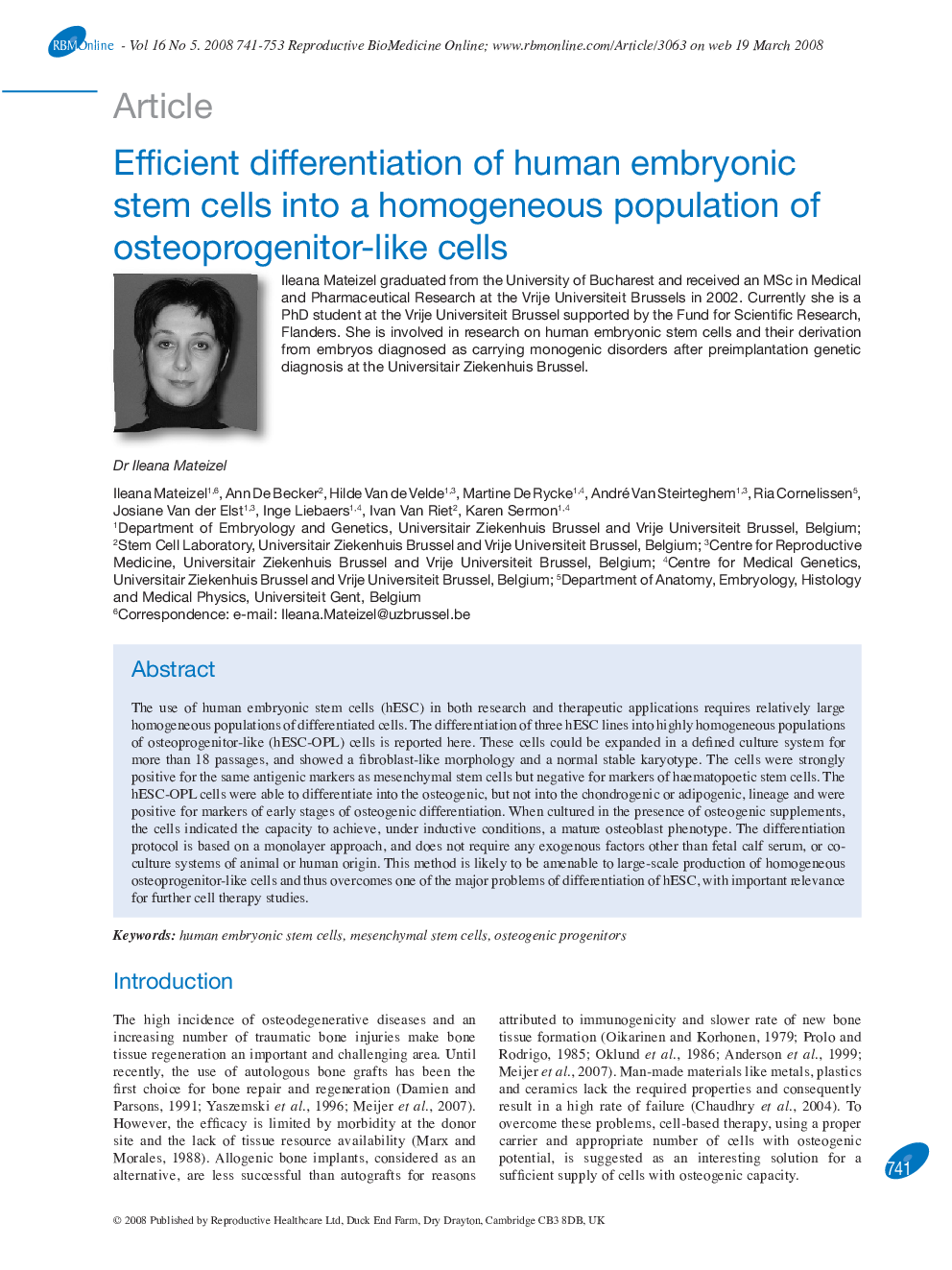| Article ID | Journal | Published Year | Pages | File Type |
|---|---|---|---|---|
| 3972463 | Reproductive BioMedicine Online | 2008 | 13 Pages |
The use of human embryonic stem cells (hESC) in both research and therapeutic applications requires relatively large homogeneous populations of differentiated cells. The differentiation of three hESC lines into highly homogeneous populations of osteoprogenitor-like (hESC-OPL) cells is reported here. These cells could be expanded in a defined culture system for more than 18 passages, and showed a fibroblast-like morphology and a normal stable karyotype. The cells were strongly positive for the same antigenic markers as mesenchymal stem cells but negative for markers of haematopoetic stem cells. The hESC-OPL cells were able to differentiate into the osteogenic, but not into the chondrogenic or adipogenic, lineage and were positive for markers of early stages of osteogenic differentiation. When cultured in the presence of osteogenic supplements, the cells indicated the capacity to achieve, under inductive conditions, a mature osteoblast phenotype. The differentiation protocol is based on a monolayer approach, and does not require any exogenous factors other than fetal calf serum, or co-culture systems of animal or human origin. This method is likely to be amenable to large-scale production of homogeneous osteoprogenitor-like cells and thus overcomes one of the major problems of differentiation of hESC, with important relevance for further cell therapy studies.
